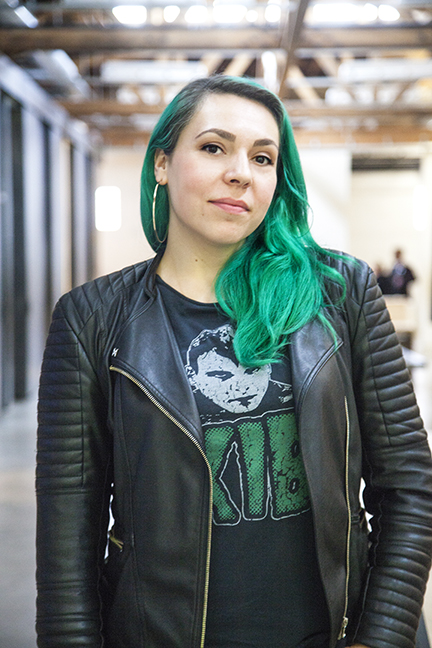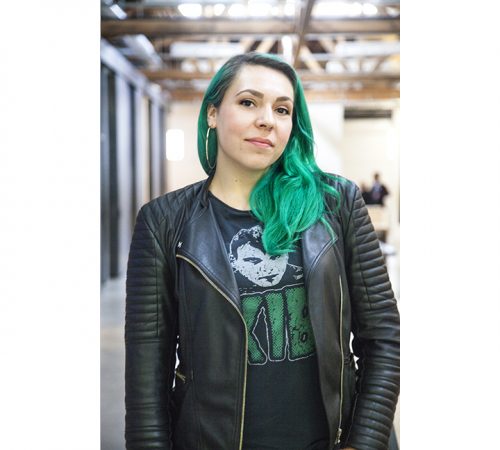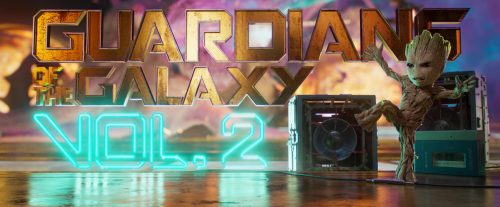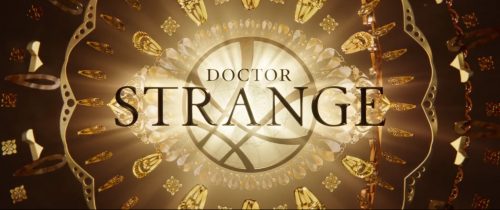
Tnaya Witmer – Senior Designer
Tnaya Witmer is a Senior Designer at Chicago based Sarofsky. Marvel, Tic Tac, Shameless, Corona, Jeep, Friends From College, Absolut, and Budweiser are just a small sample of the brands, shows, or projects that have used Sarofsky’s services. If you’ve ever been to a movie theater, watched Netflix, turned on a TV, or looked at the screen of a phone or computer, you’ve likely seen something they have created. Tnaya’s background, experience, and knowledge of digital media, art, and design have easily established her as a leading professional in this field. Whether it be working on a Budweiser Super Bowl commercial, TNT’s Animal Kingdom, or Marvel films such as Doctor Strange, Captain America, or Guardians of the Galaxy, Tnaya has played an important role. In The Loop jumped at the opportunity to visit the Sarofsky offices and interview Tnaya. She brought us up to speed on what it’s like working for globally recognized brands, advice she has for people just starting out, and told us about her own personal background.
IN THE LOOP: What are some of the large scale projects you’ve worked on the past few years?
TNAYA WITMER: In the past year we have worked on Guardians of the Galaxy Vol. 2 and a title sequence for the Netflix original series Friends from College, which was a lot of fun. In previous years we worked on the title sequence for a show on TNT called Animal Kingdom and a slew of other Marvel projects such as Captain America: The Winter Soldier, Captain America: Civil War, Ant-Man, Guardians of the Galaxy Vol. 1, and Doctor Strange.
ITL: What’s been your favorite project you’ve worked on?
TW: We’re all sort of romantic about Captain America: The Winter Soldier because it was our first Marvel title. Very Saul Bass inspired (a designer that we all admire) so that one’s really special to everyone here that worked on it.
ITL: What advice do you have for someone starting out in film and motion graphic based work?
TW: I would say learn as much as you can and meet as many people as you can. The more that you can collaborate the more you open your network and the more you open yourself up to knowledge. Just being here (Sarofsky), there are so many different people with different focuses that I’m always learning. If I don’t know something, I can go to someone and ask “Can you work on this with me?”, and that just makes my work so much better. Divide and conquer.
ITL: What is your general background?
TW: My background is kind of all over the place. One of the things about a lot of the people here at Sarofsky is we tend to come to this place in a very untraditional way. I initially went to school for industrial design. I was working on an independent film after school and I was seeing the director and the DP working with cameras and all that stuff and was like “I think that seems fun”, instead of managing props and all this stuff. So I decided to go back to school to learn directing and editing. I worked as an editor for a little bit and found it to be terribly boring, but you also had to know a little bit about motion graphics. Like how to create a lower third or something like that. I really enjoyed that so I started teaching myself After Effects and Cinema 4D.
ITL: What software do you consistently use the most?
TW: Primarily Cinema 4D and After Effects, with Photoshop and Illustrator for supplementary design tools.
ITL: What do you like most about using 3D software?
TW: I think it’s mostly being able to create so much more depth and complexity, being able to create more dynamic visuals. It’s not that you can’t do really cool stuff in After Effects, but there are limits. The finer details that you can get in C4D in terms of lighting, texture and physics really helps.
ITL: Do you have an art background that helped give you an advantage in motion graphics?
TW: My mom was always very artistically inclined so art was always a really big part of my life. Growing up she was entering me in scholastic art competitions . My senior year of high school I had the opportunity to go to a tech school for the year for a graphic design program. There I learned typography basics, grid layouts, how to use Photoshop, how to use Illustrator, which was incredibly beneficial.
ITL: What type of art did you create as a kid?
TW: All kinds of stuff. I think it was kindergarten or first grade, I did this drawing in pastels where an angel was painting the night sky blue, painting it back to day. In high school I was doing tons of mixed media stuff, melting styrofoam and painting it, wire sculpture, all kinds of weird stuff. It was interesting to have that experience creating in a physical world and then being able to apply it in a digital world.
ITL: What professional traits are necessary to excel in your field?
TW: I think what’s really essential is not having an ego, coming in wanting to learn, not thinking that you know everything. People are going to respond well to you, they’re going to want to work with you. Being a generally nice person helps . Also working clean. Are your projects able to pass off to another person? A lot of shops are like this, where many people will work on a project from beginning to end , so if you’re nice and you can work clean you can work pretty much anywhere .
ITL: How do you set aside personal style and preferences when working on something that has a specific client need?
TW: It’s an understanding that this project doesn’t belong to me, it belongs to the client. I can provide my advice and design sensibility , but ultimately it’s their decision because it’s their product. Understanding that I’m working to create someone else’s vision, helps make that separation of personal style versus what’s appropriate for the project.
ITL: What do you do to find inspiration when working on something creative?
TW: We do a lot of Pinterest, making boards of things that are relevant to the project. I spend a lot of time on Designspiration and Behance . I find those to be really helpful for inspiration. With Pinterest you always get things like “how to make that pumpkin muffin” or “here’s how to make this snowman out of cotton balls”. Designspiration and Behance are all design work. From photography to product design to motion graphics they’re much more curated.
ITL: Who are some artist you currently follow?
TW: I follow a lot of street artists because I like the edginess of the designs. Some of it’s simple, some of it’s more complex. I really like D*face and Above. D*face is based out of London. His style is a little bit of Disney and a little bit of Roy Lichtenstein . Above does a lot of concentric arrows. When I first discovered his work he was putting things in really high places so that you had to really keep an eye out to find his work . Recently he’s been doing murals and galleries. But there’s a crisp sense of design and good use of colors, I really respond to that.
ITL: What is your favorite place to eat in Chicago?
TW: There is a taco place on Western called Quesadilla La Reina Del Sur, and they have the most phenomenal tacos. It’s all vegetarian and I’m vegan so it’s perfect. I’ve taken pretty much everybody there, meat eaters and vegans, and everybody loves it. Super authentic, you wouldn’t realize that it’s a vegan place other than it says “vegan food” in the window.
ITL: What things personally define you as a person?
TW: This is a hard one to answer so I asked my nearest and dearest. According to them I am unorthodox, passionate and a secret optimist, which is way more accurate than I could have ever described myself!




